May 07, 2025
Author:Sam Wonder
Ranging among the strangest of species in any freshwater, the upside down catfish. This peculiar fish charms aquarists not only for its uniqueness but also for its playfulness and the weird upside-down swimming it does.
The species is peaceful and adapted, which makes it popular among aquarists. Its sleek body, silvery luster, and curious nature add life to any tank.
This species is gaining fame within the Synodontis catfish family because of its fantastic capacity to adapt to various environments while remaining lively and engaging in the aquarium.
Besides its unusual way of swimming upside down, the fish is also very peaceful, tolerant, and friendly to other fish. If the bizarre side of aquatic life enamors you, the upside down catfish is perfect for witty aquarists and beginners alike.
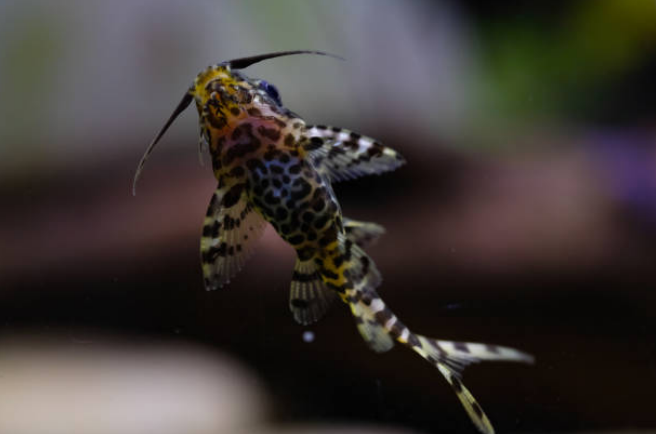
The Upside Down Catfish makes a fascinating spectacle through the unique form of swimming. Unlike most fish, however, this catfish swims belly up, gliding on water with its underside facing the surface. The behavior is instinctive; it may sound strange, but it has a pattern. Upside down fish maximize the ability to negotiate the ground, looking for food along river beds in the wild.
The fish has a mechanism that aids its upside-down posture. To begin with, its fins are positioned to help a lot. They allow significant flexibility for fine control of movement and balance over the upside-down swimming position.
Secondly, these catfish boast an incredible degree of buoyancy control, allowing them to maintain the upside-down swimming orientation without wasting too much energy.
The fish in their natural habitat are found in Central Africa in river systems where they thrive in slow-moving waters, occasionally in thick vegetation with many hiding spots. Beyond their odd swimming mode, these fish are known to be relatively amicable.
The fish form a naturally social group and can peacefully live with any other non-aggressive fish. Their calmness goes a long way in ensuring peace in any tank whenever the aquarists choose to create a community.
The Synodontis family of catfish includes many different species that are well known for their beautiful physical appearance and exotic behaviour. They can be found in Africa and are kept in the aquarium trade for their traits and hardy nature.
More than 130 species belong to Synodontis, a genus discovered mainly in the rivers and lakes of Africa. In fact, these fish have certain features, like big and widely set eyes and spiny pectoral fins that make them easily identifiable from the rest. Also, they show off an unusual body structure that helps them get great attention in any aquarium.
While all Synodontis catfish have a particular set of characteristics, the real standout is the Upside Down Catfish, which has evolved a different way of moving compared to others: swimming almost entirely belly-up. Instead of holding upright like most other family members, the Upside Down Catfish utilizes its unusual swimming position for foraging on clear riverbeds.
Despite their cardinal differences, all Synodontis catfish are behaviourally peaceful and calm, making them suitable for community tanks. Being social with other peaceful fish, these catfish promote harmony in the aquarium. The Synodontis is adaptable to various water conditions, nd easy to care for, making it a favourite for beginner and advanced hobbyists.
Building a perfect tank for your upside down catfish is essential since it should develop nicely in healthy, stress-free surroundings. Suppose you try to understand that these beautiful fish need peaceful, adaptable, specific conditions to be happy in their homes. When setting up the tank, consider the following care for upside down catfish:
A tank suitable for housing upside down catfish should not have catfish. It provides the required swimming space and enables them to perform natural behaviours. A larger tank also enables more fish and provides an environment that maintains relatively stable water conditions, which are crucial to these sensitive creatures.
Water quality is of utmost importance as far as the indoor habitat of your catfish is concerned. They prefer slightly acidic water to neutral, while room temperature is ideal.
Tank Parameters:
● pH: 6.5–7.5
● Temperature: 72–82°F
● Water Hardness: Moderate
● Ammonia & Nitrites: 0 ppm
● Nitrates: < 20 ppm
These water conditions:
● Stable water conditions will make your upside down catfish healthy and active.
Another great feature of the upside down catfish is that they are very peaceful fish as mentioned before. It gets along perfectly with all other non-aggressive fish.
Among those better tank mates are peaceful cichlids, tiny tetras, and so on, with other community fishes. Do not keep this fish among aggressive species because they will bully it or play with its unique swimming style.
Like many others, the upside down catfish is not fond of the flat Earth but enjoys hidden security.
It can be caves, driftwood, or a stressed-out plant; it's all good as long as they can retreat when they need privacy. These hideouts also mimic their natural riverbed habitat.
Upside down catfish is a bottom-dwelling fish, so ensuring the right substrate is crucial. Smooth gravel or sand is ideal, as rough substrates could irritate sensitive skin.
The right filtration system is critical for keeping water clean and ensuring appropriate water quality. The Upside Down Catfish should live in moderately vigorous filtration.
Take care not to set up a current strong enough to stress them. Provide the lighting; however, they may feel comfortable in a dimly lit environment, like in their natural habitat.
They are not choosy eaters and enjoy sinking pellets as their main food source. Budgets allow feeding them live or frozen food, such as brine shrimp, bloodworms, and daphnia.
They thrive on sinking food to the bottom of the tank, as they spend most of their time near the bottom substrate to guarantee they pick up the food without competition.
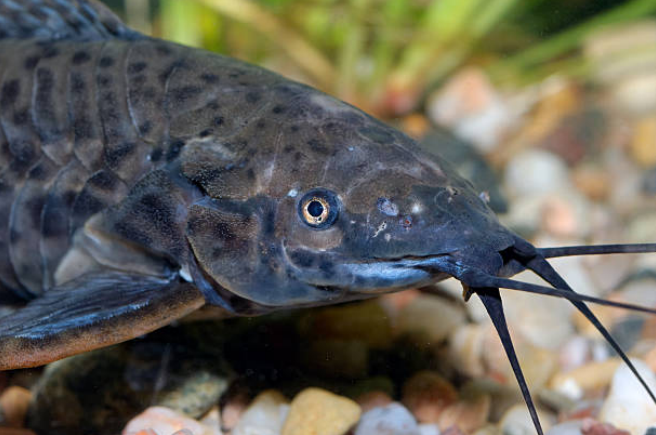
Feed your upside down catfish once or twice a day. Do not overfeed them; excess waste will cause the water quality to drop. Ensure the Upside Down Catfish has easy access when food is dropped in with multiple fish in the tank.
An indication of poor health is low activity, unusual swimming or positioning, being at the top, or refusing to sit to take food. Stress or sometimes poor quality water is the main contributing factor to the poor aquarium environment.
Regular cleaning practices should be taken to ensure the general cleanliness of the Upside Down Catfish. Partial water change should occur in the tank every two weeks, at around 25 - 30 %.
The bottom of the tank should be very well vacuumed to remove any uneaten food or waste, to avoid the development of poor water quality in the tanks.
Upside down catfish should survive five to ten years with the proper husbandry. A constant environment, decent nutrition, and healthy tank mates should help keep them happy and live long lives.
The upside down catfish might generally be considered hardy, but some common health issues can afflict these fish and require observation by aquarium owners.
Ironically, due to the habit of catfish swimming upside down, they may sometimes develop swim bladder problems. This affects their buoyancy control, causing them to float at the surface or struggle to maintain balance.
Typically, swim bladder issues arise from poor water conditions or overfeeding.
The upside down catfish is subject to bacterial infections due to poor water quality. Bacterial infections include a pumpkin color, swelling, and open wounds on the flesh. Clean tanks with stable water parameters go a long way toward keeping these issues at bay.
Look for minor signs of distress: poor appetite, lethargic movements, or changes in swimming patterns. These signs may indicate stress or recent illness in your fish. Prompt action often saves the fish from further deterioration.
The upside down catfish is one of the most interesting fish in the aquarium. Swimming upside-down and being calm and entertaining, the fish is thus loved in the freshwater aquarium circuit.
This means whether it is a beginner taking baby steps into the aquarium hobby or an advanced hobbyist, fish will add a little twist to the idea.
Taking care of upside down catfish is not just about feeding and cleaning; it is about setting up the environment to suit their quirky personalities. Extremely fun at night with their shenanigans, upside down catfish are a peaceful bonus in a community tank.
Look no further if you're searching for a lazy, off-beat, yet extroverted fish. Whether a novice aquarist or an experienced hobbyist, WOpet's resources and tools can help you provide the best care for your upside down catfish.
Popular Post

What to Feed a Sick Dog With No Appetite? [2025 Guide]
May 16, 2023
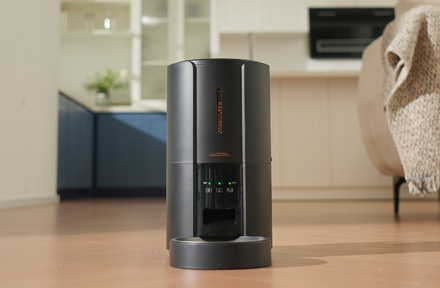
Troubleshooting Common Issues with Automatic Pet Feeders: Tips & Tricks for Pet Owners
Oct 26, 2023
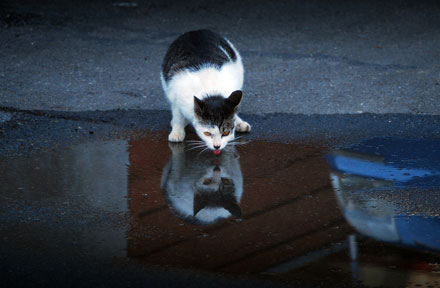
Why Does My Cat Cough After Drinking Water? 8 Potential Reasons
Mar 13, 2023
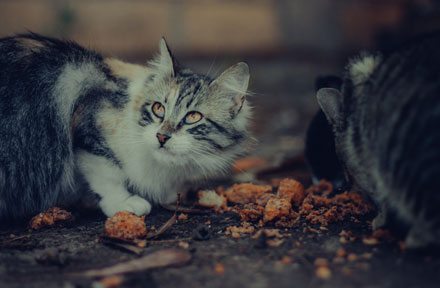
My Cat Only Eats A Little at A Time - What to Do?
Feb 27, 2023
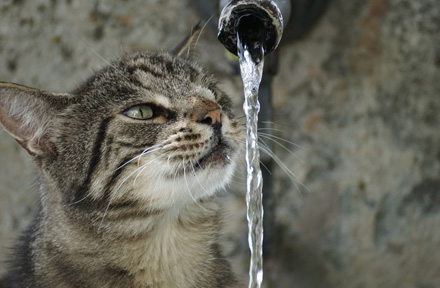
Why is My Cat Throwing up Water? Top 5 Causes Here
Feb 08, 2023
$99.99
$129.99
Copyright © 2025 WOPET. All Rights Reserved.